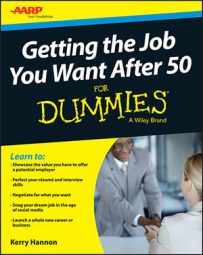Copyright © 2015 AARP. All rights reserved.
Getting your dream job after 50 may make you think that retirement is out of the question. If you’re starting a business, working on contract, moving to a nonprofit, or joining a small firm without an employee retirement plan, open your own. Your three key options are solo 401(k), SEP-IRA, and a Simple IRA.
Solo 401(k): This plan is best if you’re self-employed with no employees and have income of $100,000 or more. The maximum amount you can contribute is 20 percent of net self-employment income plus $18,000, up to $53,000 in 2015; if you’re 50 or older, you can contribute up to $6,000 more. The deadline to open an account to be eligible for a deduction is December 31. You can make contributions until your business’s tax-filing deadline.
SEP IRA (Simplified Employee Pension): An SEP is a good choice if you’re running your own business with no employees. The maximum contribution is 25 percent of self-employment income, up to $53,000 for 2015. The SEP has no “catch-up” provision allowing people age 50 or older to invest more than younger people. The deadline to open is April 15 to be eligible for a deduction for the previous tax year or October 15, if you file for an extension.
Simple IRA: You may opt for a Simple IRA if you have fewer than 100 employees. You can also have a SIMPLE IRA if you don’t have employees. If you do have employees, you typically must match up to 3 percent of their compensation. The maximum contribution is $12,500 up to $15,500 if you’re 50 or older. The deadline to open an account is October 1 to be eligible for a deduction in the current tax year.
Don’t worry about having to max out your contribution; save as much as you can. Opt for an auto-deposit program if your bank and financial firm permit so that you can have a set amount automatically shifted from your business’s bank account into a retirement plan every month.
Low-income individuals or couples can qualify for a special Savers Credit of up to $1,000 for an individual or $2,000 for a couple for retirement plan contributions. To be eligible in 2014, single taxpayers couldn’t earn more than $30,000 (or $60,000 for married couples).

